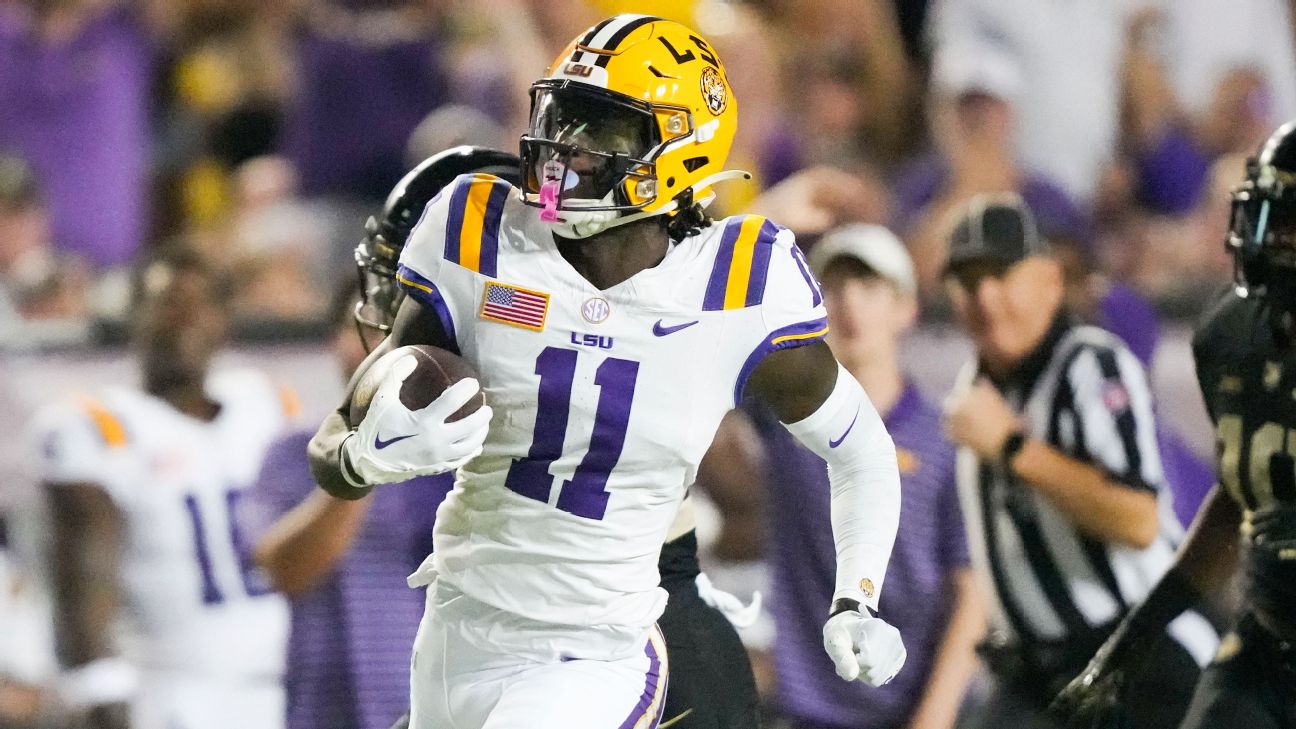The Jacksonville Jaguars entered the 2024 NFL Draft with a pressing need at cornerback, but their strategy to address this position was deliberate and measured. Opting to wait until the third round to make a move for a cornerback, they first secured wide receiver Brian Thomas Jr. and defensive tackle Maason Smith in the early rounds. Matt Holder from Bleacher Report, however, suggested in his draft re-evaluation that the Jaguars should have prioritized a cornerback with their 17th overall pick instead of trading down for Thomas.
Holder’s re-draft analysis emphasized the Jaguars’ depth at wide receiver with Christian Kirk and Gabe Davis as viable targets for quarterback Trevor Lawrence. He argued that given the depth of this year’s wide receiver class compared to the cornerback options, Jacksonville could have benefitted more from securing a starting cornerback early.
When Jacksonville initially held the 17th pick, all top cornerback prospects were available. Instead of selecting one of them, they traded down six spots with the Detroit Lions, acquiring the 23rd overall pick, a 2024 fourth-round pick, a 2025 third-round pick, and a 2025 fourth-round pick in return. This maneuver allowed them to accumulate additional draft assets but pushed their chance to address cornerback further down the draft order.

The first cornerback, Quenyon Mitchell, came off the board at No. 22, followed closely by Terrion Arnold to the Lions at No. 23 and Nate Wiggins to the Baltimore Ravens at No. 30. Despite several cornerback prospects still being available in the second round, including Cooper DeJean, Kamari Lassiter, and Kool-Aid McKinstry, the Jaguars remained patient, ultimately selecting Maason Smith at No. 42.
Reports indicated Jacksonville’s interest in Terrion Arnold, and had they not traded down, Arnold might have been their pick if Thomas Jr. had been unavailable. Nevertheless, the Jaguars appeared confident in their decision to wait until the third round to select Jarrian Jones at No. 96 overall.
Jones has shown promise during offseason workouts, demonstrating both athleticism and potential as a playmaker. He enters training camp as the third cornerback on the depth chart behind Ronald Darby and Tyson Campbell, poised to compete for a starting role in the upcoming season.
In Holder’s revised draft scenario, Brian Thomas Jr. ended up being selected just after Jacksonville’s original pick, joining the Cincinnati Bengals instead. While Terrion Arnold could have filled a crucial role in the Jaguars’ secondary, the team ultimately valued Thomas Jr.’s potential impact at wide receiver.
Acknowledging the hypothetical benefits of selecting Arnold at No. 17, it would have solidified the cornerback position and alleviated concerns heading into the regular season. However, this decision would have left Jacksonville without a top-tier wide receiver prospect to replace the departed Calvin Ridley, who left for the Tennessee Titans in free agency.
Moreover, the Jaguars’ acquisition of Gabe Davis in free agency tempered the urgency to address wide receiver early in the draft. The team’s subsequent release of Zay Jones, a move possibly influenced by their draft strategy, underscored their confidence in Thomas Jr. as a future contributor.
Looking forward, while Terrion Arnold may thrive with the Lions, the Jaguars remain optimistic about Brian Thomas Jr.’s potential impact on their offense. Their draft strategy, bolstered by additional draft picks acquired through trades, reflects a calculated approach aimed at maximizing long-term benefits while addressing immediate needs in the team’s roster composition.

